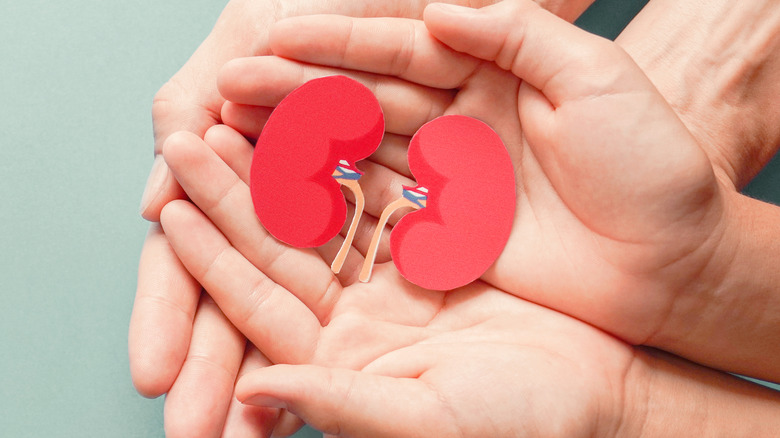Is There A Difference Between Your Left And Right Kidney?
The kidney is the most needed organ for donation. According to the American Kidney Fund, the number of people on the transplant list awaiting a healthy kidney exceeds that of all other organs combined. With roughly 100,000 people in need of a kidney transplant, this organ donation is a life-saving procedure. Both the donor, as well as the patient receiving the donation, can survive solely with one kidney. But what is the function of the kidney, and is there a difference between the two?
As per Kidney Research UK, these organs play an important role in filtration, as they work to cleanse our body of toxins and fluid waste. Measuring in at about 10 to 15 centimeters in length, each kidney can weigh about 160 grams (5.6 ounces). Generally, our bodies contain two kidneys; however, it is possible for individuals to be born with three. Among its many other essential functions, the kidneys also help keep our water and electrolyte levels balanced, as well as produce hormones essential to our health. And while they typically come as a pair, your left and right kidneys do differ from each other.
Left and right kidneys differ in size and other ways
According to experts behind the educational learning app, BYJU'S, our right and left kidneys differ as to what parts of the body they connect to, their size, as well as where they're positioned in the abdomen. In terms of size, the right kidney is about 1.5 centimeters shorter in length than the left kidney. Additionally, the left kidney sits a bit higher than the right kidney between ribs 11 and 12, while the right kidney sits lower at rib 12. This is due to the fact that the liver occupies more space on the right side of the abdominal cavity, according to InnerBody Research.
When it comes to donation, is it safer to donate one kidney over the other? A 2015 comparative study published in Clinical Transplantation found that left kidney donation may have different outcomes for patient recipients than right kidney donation. Left kidney recipients may be at a lower risk for complications such as renal vein thrombosis since the left kidney has a longer renal vein. It's important to note that the differences found between left and right kidney donation were minimal and that organ donation is best evaluated on a case-by-case basis between the patient and a medical professional.


